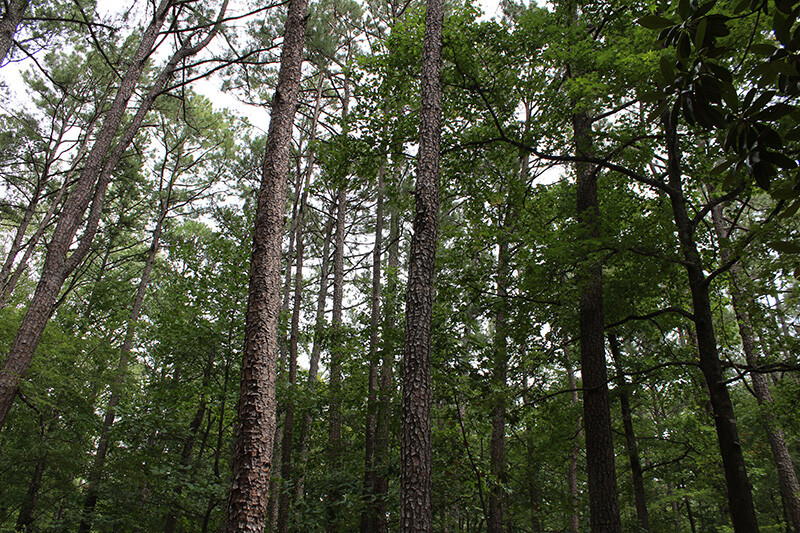Georgia is home to the largest commercial timberland in the U.S., with 24.8 million acres of forest covering its 37 million acres of land. Forestry is the state’s second-largest industry, making it vital to balance economic growth with conservation.
The Forest Land Protection Act (FLPA) supports this balance by offering long-term property tax incentives for landowners who commit to maintaining their forest land.
Contents
What is The Forest Land Protection Act?
FLPA Rules and Regulations
Considerations for Landowners
FAQs
What is The FLPA?
Enacted in 2008, the FLPA is a property tax incentive program designed to promote the conservation of privately owned forest land. Landowners who commit to keeping their land in forest production for at least 10 years receive significant property tax reductions.
How FLPA Affects Property Taxes
In Georgia, land is typically taxed based on 40% of its fair market value. Under FLPA, however, land is taxed based on 40% of its current use value, similar to Georgia’s Conservation Use Value Assessment (CUVA).
This shift usually lowers property tax liability, making long-term conservation financially viable for landowners.
Primary Uses of FLPA Land
Secondary Uses of FLPA Land
Land enrolled in FLPA may also be used for:
FLPA Rules and Regulations
Eligibility
To qualify, the property must:
- Be 200+ acres of contiguous forest land (or multiple parcels exceeding 100 acres).
- Be owned by an individual or a registered entity in Georgia.
- Be used for forest conservation, natural resource restoration, or timber production.
Exclusions
The FLPA does not cover:
- Residences located on the property.
- The value of buildings, structures, or improvements.
Tip: Some structures dedicated to timber production or conservation purposes may be covered (e.g. timber storage sheds, watering structures or feeders for wildlife, etc.)
Penalties
FLPA-designated land comes with strict requirements. Here’s what you need to know:
If You Sell FLPA Land:
- The buyer must uphold the conservation use of the property.
- If the buyer signs a continuation agreement, no penalties apply.
- Selling even one acre outside of compliance could breach the covenant.
Covenant Breach Consequences:
- Financial Penalty: New owners must pay twice the annual tax savings plus interest.
- Correction Period: Owners have 30 days to resolve violations before penalties apply.
Activities That Do NOT Count as a Breach:
- Keeping land idle for up to two years.
- Hunting and fishing rights.
- Selling or donating up to 25 acres to a church or charity for non-commercial use.
- Leasing portions of land for solar energy, transmission towers, or power lines.
Considerations for Landowners
- Long-Term Commitment: The 10-year covenant can be a significant commitment. Landowners must carefully consider whether they can commit to maintaining FLPA compliance for the full term.
- Limited Flexibility: FLPA restrictions on land use may limit a landowner’s options for managing their property. While some secondary uses are permitted, the primary focus must remain timber production.
- Complex Regulations: Navigating FLPA eligibility and application requirements can be challenging. Landowners may need professional guidance to ensure compliance.
- Monitoring and Enforcement: Local tax assessors review property records and may conduct site inspections to ensure compliance.
FAQs
How do I Apply For FLPA in Georgia?
Applications are usually available at the local County Tax Assessor’s Office or on the county website.
Applicants may need to provide:
- A land use property description (tax records or plat maps).
- A GIS map or aerial photograph of the property.
- Proof of ownership (property deed or legal documents)
- A forest or conservation management plan (tree planting or timber sales documentation).
Applications must be submitted to the Board of Tax Accessors between January 1 and the 45th day of each year.
Once approved, the covenant is recorded in the county land records, legally binding the landowner to FLPA compliance for the full term of the covenant.
Can I Still Use my Property for Activities Other Than Timber Production if it’s Enrolled in FLPA?
Yes, as long as the land’s primary use remains forestry or conservation, secondary activities (e.g., hunting, wildlife preservation) are allowed if they do not interfere with the primary purpose of timber production.
Can I Sell an FLPA Registered Property?
Yes, but the new owner must agree to continue the covenant to maintain tax benefits and avoid penalty charges.
If only a portion of the property is sold and it results in the remaining tract falling below the 200-acre minimum, penalties may apply.
How Do I Know if Land is FLPA Registered?
You can find out if a parcel is FLPA registered by visiting the county’s assessors website.
You can also use mapping and data tools such as Acres.com to see if a parcel is registered as conservation land, timberland, or forest protection.
Final Thoughts
Understanding the Forest Land Protection Act (FLPA) is essential for Georgia landowners who want to reduce property taxes while keeping their land productive and preserved. Whether you're evaluating your own land for enrollment or scouting new investment opportunities, having the right data makes all the difference.
Start your FLPA eligibility analysis with Acres. Map forest cover, analyze timber potential, and explore market data—all in one powerful platform built for land people. Visit Acres.com today and turn land data into smarter decisions.
